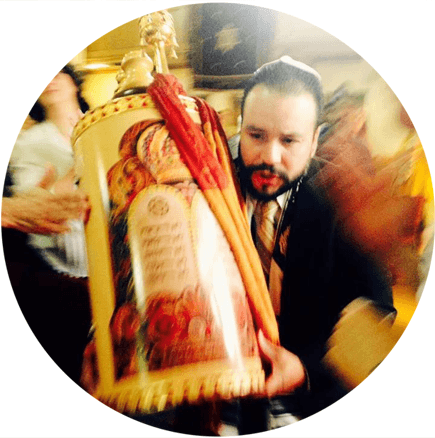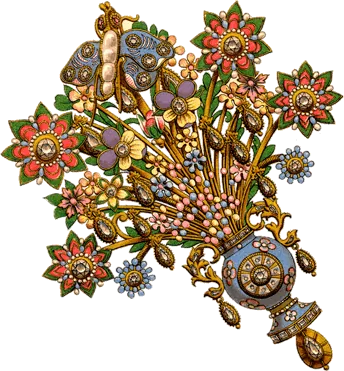"To Israel belongs the adoption to sonship; theirs is the divine glory, the covenants, the receiving of the Torah, the Temple worship and the promises. Theirs are the patriarchs, and from them is traced the human ancestry of the Messiah..." (Romans 9:4-5)
The Customs and traditions practiced at Sar Shalom are an essential part of Messianic Jewish expression and continuity with the rest of the Jewish world. Liturgy was used in the Temple to accompany the offerings and has continued as centerpiece of the synagogue experience for over two thousand years.

The Sources of Our Prayers
The Source of our prayers are the Korbanot, the daily offerings that were brought in the Holy Temple in Jerusalem. The Torah ordains that one lamb was to be offered in the morning and a second lamb in the afternoon (Numbers 28:4). This was done every day without exception as an expression of Israel's national, corporal, devotion to God. On the Sabbath and holidays, in addition to the morning offering, the Jewish community brought the mussaf, or additional offering.
These daily offerings are the Avodah, that is, the service and worship of God.
The Temple Service and Prayer
The essential element of the Temple service was the offering of the daily Tamid, the sacrifice of two lambs, one in the morning, with which the service began, and one in the afternoon, with which the service concluded. Prior to the morning tamid and after the evening tamid, no personal or votive offerings were permitted to individuals. All individual offerings were accepted only after the morning (corporal) tamid was presented and before the tamid in the evening.
In the days of the Temple, it was the custom of the priests (Kohanim) performing the daily service to conduct special lotteries in the morning to ensure equal participation in the daily service. To prepare the morning tamid, there were only a specific number of tasks that could be performed, and because it was impossible for everyone to attend to these at once, the lottery system helped determine the assignment of priests in way that wasn't biased. This method ensured that each priest of the shift would have an equal opportunity to officiate in these holy vocations.
"Once when Zechariah's division was on duty and he was serving as priest before God, he was chosen by lot, according to the custom of the priesthood, to go into the temple of the Lord and burn incense. And when the time for the burning of incense came, all the assembled worshipers were praying outside." (Luke 1:8-10)
The third lottery was unique. This was held to determine who would have a chance to officiate at the incense offering, which according to Jewish tradition was the most beloved part of the Temple service in the eyes of God. The one who won the honor to offer the incense would take a pan full to the brim with incense and present it before the Lord at the altar in the Sanctuary. The Mishnah tells us that after the offering he would then recite the Ten Commandments, the Shema, and the portion of the Amidah dealing with the service.
Relevance For Today
Rav Shaul, or the Apostle Paul, writes in his letter to the Romans, “To Israel belongs the adoption to sonship; theirs is the Divine Glory (Sh’khinah), the Covenants, the Torah, and the Temple Worship.”
From the words of Paul, we are reminded that God gave the Temple Service to Israel. The Temple worship, to include its offerings and prayers, are God’s prescribed method of service entrusted to the Jewish people. It is the manner in which God desires to be worshiped and serves as model for both corporal and personal prayer.
This is the way the Disciples of Yeshua worshiped in the First Century. The Book of Acts records that, “They continued steadfastly in the apostles’ teaching and fellowship, in the breaking of bread, and the prayers (καὶ ταῖς προσευχαῖς)... every day the disciples continued to meet together in the Temple courts, worshiping God and enjoying the favor of all the people.” (Acts 2:42, 46-47)
Indeed, Jesus (Yeshua) gave his own stamp of approval on the Temple service as the gospels record that time and time again, he actively participated, taught, and davened (prayed) in the Synagogue and in the Holy Temple.
Today, with the absence of the Beit Hamikdash, we can no longer participate in the daily offerings prescribed in the Torah. What does remain however, are the numerous prayers and blessings that were offered in the daily service.
These prayers, such as the Blessings of the Shema and the Amidah (Shemoneh Esrei), have been preserved, passed down, and recited throughout the generations. We can still participate in this rich and ancient tradition - a tradition and service of worship prescribed by the Holy One, Blessed be He!
Offerings, as the origin of prayer, impact upon our prayers both legally and philosophically: By uttering these prayers, we not only present God with a pleasing offering of our lips, but we also join in the generations of Israel past and present, as we follow the Master Yeshua’s example, and worship God in the same manner the disciples did in the First Century.

